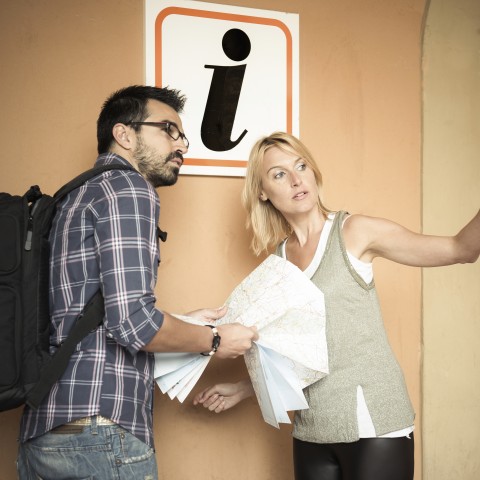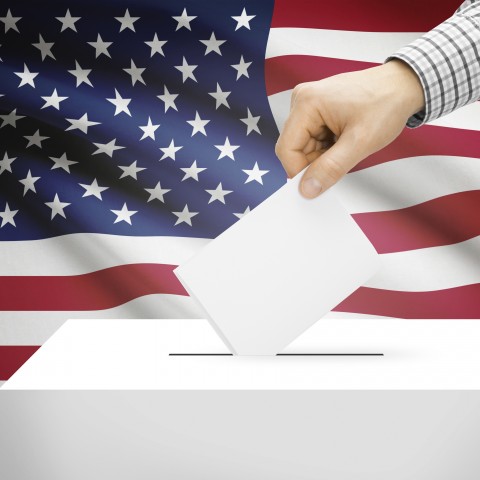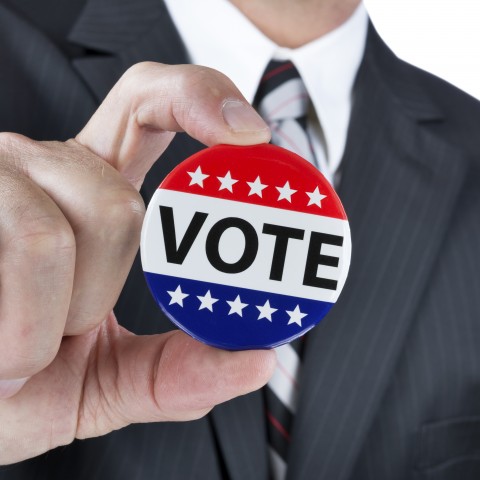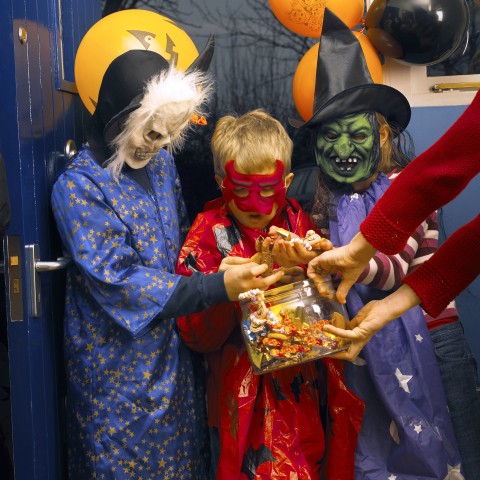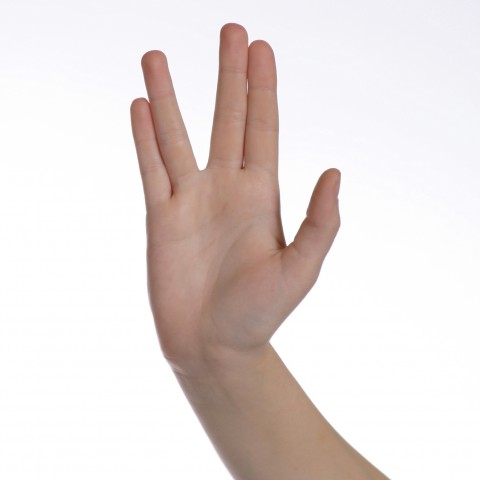
At EnglishClass101, we show you how to use the basics of the language correctly, with loads of aids and easy-to-use tools! Yet learning the slang words and phrases, as well as the texting acronyms of any new language, will greatly increase your ability to chat with native speakers. They often serve to enhance conversation and add color to what you need to say online, without using many words.
Slang language is defined, according to Google dictionary, as “a type of language consisting of words and phrases that are regarded as very informal, are more common in speech than writing, and are typically restricted to a particular context or group of people.”
So, you should be able to see that if you want in with any community of English locals, it’ll be helpful to get to know their slang.
That said, some slang is universal, and is widely used on the internet. The most popular online spaces include forums and social media platforms such as Reddit, Twitter, Facebook, Instagram, and so on.
Internet slang or text abbreviations appear in the form of acronyms (shortening a sentence or phrase by writing only the first letters of the words), which was made popular on platforms like Twitter, where you can post only a limited number of characters.
For instance, “lol” comes in handy, when you don’t have space to write out “laugh out loud.”
Another form of internet slang is specific words or short phrases that have a meaning other than what they normally do in English. Sometimes, they convey a feeling, or take the place of facial expressions, such as “facepalm,” to depict embarrassment or exasperation.
In other cases, they are completely new words with unique uses. As they say, sometimes just one word tells a whole story—the internet has a whole lingo of its own like that.
In this blog, we offer you a list of the most-used text abbreviations in the form of acronyms, as well as internet slang. So be sure to add these to your arsenal of English vocabulary!
- Acronyms
- Internet Slang
- Conclusion

1. Acronyms

Internet-specific acronyms started appearing almost as soon as social media did. They’re written in capital letters or lowercase, your choice. Scroll through these popular text slangs and chat abbreviation, and start practicing!
1- DSL—Don’t Stay Long/Dumb Stupid Loser
This acronym can have many meanings, but these two are the most commonly used. Not very polite to call someone a “dumb, stupid loser,” so use with discretion.
2- IKR—I Know, Right
This is an American expression mainly used in casual conversation. You use “IKR” to indicate that you fully agree with someone.
This is one of the older internet slang acronyms, so you may want to read up on its history and learn more about its usage.
3- LOL—Laugh Out Loud or Laughing Out Loud
This is one of the first internet slang or text acronyms to find its way onto our screens. We’ve been LOL-ing for decades on social media in reaction to funnies.
However, “LOL” is considered rather outmoded…you’d be more modern if you use the following acronym.
4- Lulz—Laughs
As you can see, “Lulz” is sort of derived from “LOL,” and in addition to indicating that you’re laughing about something, it can also mean “just for laughs.”

5- LMAO—Laugh My Ass Off
The same goes for this one, also an oldie. If “LOL” isn’t strong enough, and you’ve practically ruptured your spleen laughing at something because it’s so funny, “LMAO” is the way to make this known on social media.
Of course this is just an expression; it doesn’t mean you’re literally laughing so hard your backside slides off.
6- ROFL—Roll On Floor Laughing
“ROFL” is similar to “LMAO,” meaning you need to express strongly that something is so hysterically funny, you can barely remain standing.
7- WTF—What The F***
Your chance to swear without offending anyone. This is another abbreviation from long ago that denotes surprise and astonishment, usually in response to something shocking, hugely surprising, or negative.
8- Dafuq—(What) the F***?!
WTF’s more elaborate, non-acronym cousin, which is used in exactly the same way. It’s a new word, really, of which the meaning only becomes clear once you pronounce it.

9- FML—F*** My Life
Still on the topic of legitimate expletives, “FML” is a way for you to comment on something unfortunate that’s happened to you. Also an old text slang acronym, it can be used this way:
“Just had my car professionally wax polished, cost a fortune; drove out and two birds pooped on it. FML.”
This text acronym even has its own website, where people share their misfortunes to be rated.
10- IDGAF—I Don’t Give A F***
A rather crass way to state emphatically that you don’t care.
11- NSFW—Not Safe/Suitable For Work
Some photos and material on the internet is sensitive in nature, meaning that it contains nudity, graphic images, or foul language. This acronym signals that you should take care when viewing the material, as it’s not for everyone’s eyes and might offend someone.
12- NSFL—Not Safe For Life
The former acronym means it’s OK to view the material when you’re not in a work or formal environment. Not “NSFL.” This means the material is particularly graphic and can even be emotionally or mentally scarring. It’s not as often used as “NSFW.”
13- PAW—Parents Are Watching
Probably more popular among teenagers, “PAW” serves as a warning that parents are around.
14- BRB—Be Right Back
This simply is what it says—you’re informing your chat-mate that you need to take a break from the conversation, but will be back soon.
15- MIRL—Me In Real Life
Often used to make fun of yourself, and is usually accompanied by a pic, reaction GIF, or a video.
16- NVM—Nevermind
This one’s pretty self-explanatory, meaning “No need to mind it any longer” or “Don’t worry about this topic.” In English, “Nevermind” as an expression can have a negative connotation, though, and it’s sometimes used as a sort of passive-aggressive brush off. So don’t use it during a fight with a lover!
17- IDK—I Don’t Know
Exactly what it says.
18- YOLO—You Only Live Once
One context in which you would utilize this acronym is when you want to encourage someone to do something they wouldn’t normally do. For instance, if you’re trying to convince a friend to join you for a midnight party in the streets on New Year’s, or go paragliding in the nude, or snort wasabi sauce. ‘Cause “YOLO,” you know?!
19- MTFBWY—May The Force Be With You
This is a well-known phrase from the Star Wars movies, and it’s a way to wish someone good luck.

20- TL;DR—Too Long; Didn’t Read
Quite self-explanatory. Appropriate to use when you get sent a link to a lengthy article, for instance.
21- TNF—That’s Not Funny
Another self-evident acronym. For instance, if someone had to share that notorious Logan Paul YouTube video with you, thinking it’s hilarious, you would respond appropriately with a short “TNF.”
22- WBU—What ‘Bout You
This is an acronym of dialectic slang. Some communities, usually young people, say “’bout” instead of “about.” The rest is easy to derive—ask this if you’re inquiring about someone’s opinion, or how they’re doing in general. For instance:
“Done with homework, off to shops. WBU.”
23- ICYMI—In Case You Missed It
Another self-explanatory acronym to use as a preamble to sharing the latest news on a burning topic.
24- OMG—Oh My God
Another golden oldie, “OMG” now almost has a status as an independent word. Used as a way to express astonishment, surprise, or delight, this is the more positive cousin of “WTF.” Probably somewhat less offensive too, to some.
In very religiously conservative communities, “OMG” may be seen as inappropriate to use, so be sure to exercise discretion when using this popular texting abbreviation.
25- GTG—Got To Go
Mostly used as a terse way to announce your imminent departure from the conversation, or to say that you just have to go somewhere—you feel compelled to visit a place or attend a concert or meeting, etc.
If it’s used to excuse yourself, it could be polite to follow with: “Chat again soon!”
26- OOTD—Outfit Of The Day
Fashion bloggers’ favorite Instagram acronym. It’s useful when you feel the need to share your fashion choices of the day with the world.
27- IMO OR IMHO—In My Opinion or In My Honest/Humble Opinion
An expression often used in conversation. It doesn’t really mean anything, except to announce that you’re about to give your sincere opinion.
That said, hopefully you offer only honest opinions in general, so this is not really a qualifier.
28- IMMD—It Made My Day
This internet slang is used to indicate that something really lifted your spirit, and made you feel good. For instance:
“Tx for the cake you brought to work today. IMMD!”
29- Tx—Thanks
The “x” is used as a placeholder after “T” for the rest of the word, “Thanks.” Often used, it has also been in circulation for ages.
30- AMA—Ask Me Anything
Touted to have originated on Reddit when an authority started using this to open topics for questions, an “AMA” is now a thing. Apparently, even public Question and Answers (Q&As) are now being referred to as “AMAs.” There’s even a “The Best Reddit AMAs of all time” article.
31- Bae—Babe or Before Anyone Else
Be informed and know that Bae in Danish means “poop.” So, now that your innocence is forever spoiled, will you ever again be able to call a loved one your “Bae” with a straight face?!!
On the internet, this text slang is often used as a mockery in memes and such.
32- DM: Direct Message
Taking over from “PM,” which means “Private Message,” “DM” has been gaining traction over the past few years. It’s a way of asking someone to contact you directly and/or privately. You can use it to say, for instance:
“DM with your email plz!”
33- DAE—Does Anyone Else?
Apparently huge on niche forums, Reddit, and some discussion groups, “DAE” is used as a prefix to a question. Like in: “DAE feel the Venus retrograde transit is a killer this week?”
34- ELI5—Explain Like I’m 5
Apparently huge on Reddit, this is a way to ask someone to dumb down a topic so you can understand it in layman’s terms. Or, you could use this to ask a specialist to explain something to you in a simple way: “ELI5: How does mitosis work?”

35- FTFY—Fixed That For You
If you make an unintentional mistake on a media platform, someone can “FTFY,” quite literally. It’s also used sarcastically, such as saying:
“Microsoft is better than Apple Mac.”
“Apple Mac is far better than Microsoft. #FTFY”
36- IRL—In Real Life
The internet is not real life, so sometimes it’s necessary to state when you’re talking about it.
37- JSYK—Just So You Know
Remember “FYI” (“For Your Information”)? This is its cooler replacement and most often used. FYI will make you seem somewhat obsolete on social media, JSYK.
38- TBT—Throwback Thursday
An Instagram favorite, hashtagging “TBT” on a Thursday, with a photo of you when you were cute and chubby, will get you more comments and likes than simply posting the pic.
39- BFF—Best Friends Forever
Well-known and popular, this is used to show you really like someone, or that they’re actually your best friend.

40- YMMV—Your Mileage May Vary
When you’re chatting about a product or your experience with something, you could add “YMMV” to relay that experiences may vary from person to person. For instance: “No issues with today’s Windows update. YMMV.”
41- SMH—Shakes/Shaking My Head
Used to convey a feeling of disappointment, exasperation, or disapproval. Also consider using some of the internet slang terms below, as these have close to the same meaning.
2. Internet Slang

Some phrases and words are synonymous with social media. They serve to communicate an array of things. You may find that these internet abbreviations are just what you need to show others just how you feel.
1- Facepalm
When we’re very embarrassed—sometimes with ourselves, sometimes with another—we instinctively cover our face with our hand(s). Use “facepalm” to express a serious “Oops!” or even exasperation.

2- Headdesk
If you’re super exasperated and don’t suffer fools gladly, you probably feel like banging your head on the desk with frustration. Convey this in internet conversations with one word.
3- Squad Goals
When you see a group of friends together, acting in a way you wish your posse could, you would announce this with a pic and #Squad Goals. It could also mean that you wish you were part of that group, or that you aspire to be part of a group like that. The “squad” obviously refers to your group of friends or the people you hang with.

This is a brand-new internet slang phrase with no reference to another word or expression in English. It simply means you or someone else is being super cool, on point, perfect, or amazing. Such as saying: “Rihanna’s eyebrows are on fleek.”
5- Thirsty
Saying you’re “thirsty” for something means you really want it, almost desperately. Like in: “I’m thirsty for that jacket!”
6- Slay
This slang has nothing to do with killing anything or anyone. Used in a sentence, it’s usually to strongly say that someone’s amazingly good at something, or that something’s fantastic. Like in: “Imagine Dragons new album, slay!”
7- I Can’t Even
This phrase is used when you find yourself at a loss for words to express something adequately, either good or bad. Such as: “Lady Gaga’s movie, I can’t even!” It’s also a way of saying: “I’m speechless!”
3. Conclusion

We hope that our internet slang dictionary has been more than helpful for you. Use these as often as possible, and soon you’ll have them memorized. With these internet slangs and English slang words to use when you text message, you’ll sound like a native online too!
To fast-track your learning, make use of Learn-on-the-go apps, with over 1630 audio and video lessons. EnglishClass101 makes many tools available for free.
We also place emphasis on teaching languages as it’s spoken by natives, so you can hit the ground running when you’ve mastered the basics! The large online community associated with our school offers you the perfect training crowd, so you can practice your newly-acquired skills.
Innovative Language really slays online language learning, so don’t wait, enroll today!

































